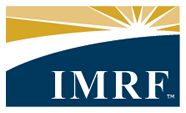Meetings to discuss IMRF’s 2004 Investment Return and
the impact on Employer Contribution Rates
April 6, 2005
We encourage each Authorized Agent to share this memorandum
with the unit of government’s chief financial officer, other officials,
and governing board members.
Executive Summary
The estimated 2004 investment return for IMRF is 12.3%. Its actuarial return—the return that impacts employer contribution rates—was only 4.8%, which is less than the actuarial investment return assumption of 7.5%. The impact of 2004 investment returns on individual employer contribution rates is difficult to forecast, since each employer has a unique rate affected by its own demographics and funded status. IMRF will conduct meetings throughout the state to meet with you and other representatives of your employer to discuss IMRF’s recent results, employer rates, and to answer your questions.
You recently received your Advance Rate Notice for employer contributions to IMRF in calendar year 2006, your Employer Reserve Statement, and your GASB 27 Footnote Disclosure.
While IMRF earned 12.3% on a market basis in 2004, its actuarial return—the return that impacts employer contribution rates—was only 4.8%, less than the actuarial investment return assumption of 7.5%. The difference between the returns is due to the five-year averaging technique used to minimize large annual fluctuations in employer contribution rates.
IMRF began 2004 with $1.2 billion of unrecognized investment losses. For 2004, IMRF will be adjusting its assumed investment income of $1,313 million (a 7.5% return on the beginning of the year actuarial value of IMRF investments) by the net unrecognized investment losses for the 2000-2004 period. Thus for actuarial purposes, IMRF’s 2004 investment return will be approximately $834 million.
Since all net unrecognized losses will have been recognized in 2004, IMRF will begin 2005 with no unrecognized gains or losses for actuarial rate setting purposes.
The average employer rate for the regular plan for 2005 is 9.25% and reflects that the regular plan is less than 100% funded. This is the first time since 1999 that the average rate for the regular plan has been higher than 8.61%.
The impact of 2004 investment returns on individual employer contribution rates is difficult to forecast, since each employer has a unique rate affected by its own demographics and funded status.
We know you and others in your unit of government may have questions about possible rate increases and the prospects for future increases to employer rates.
The IMRF Chief Financial Officer and I have scheduled meetings throughout the state to meet with you and other representatives of your employer to discuss IMRF’s recent results and to answer your questions.
The meetings will take an hour-and-a-half, consisting of both a formal presentation and a question and answer period. We encourage you, the chief financial officer, other officials, governing board members, and other interested parties from your employer to attend.

